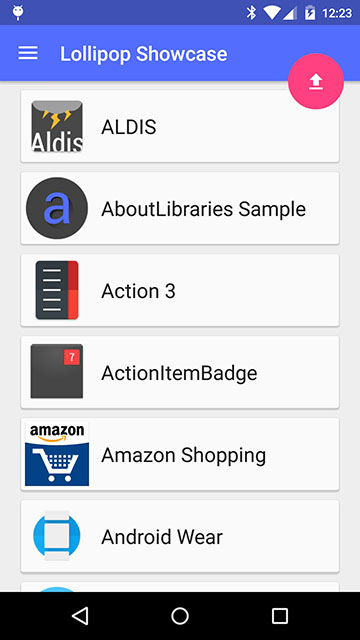What is this?
This is an Android application that will execute commands received over TCP port 9988, which includes automatic introspection to call any Anddroid java API over telnet. Also, it includes exploration tooling, and a nano-language to be able to do small stuff.
Sounds gibberish. What can this be used f or?
The goal is to be able to do simple Android things from "Linux" environments. This application is launched Android-side, and then everything can be scripted Linux-side. The Android APIs are non-trivial, so several examples are provided.
What can we do with this?
Since all Android API are accessible it can do anything, but here are some examples that you can do from the comfort of a shell or a python script:
- Install Android application
- Setup WiFi SSID/PSK
- Take a picture on the camera
- Put phone in airplane mode
- Launch apps
- Play music file
There are some limitations though, because the protocol is text-based. For instance, you can't transmit audio over this socket.
What is the protocol
It's stack based, plus support storing global variables. Commands are split on space except """
- STACK command dumps the content of the stack
- DUP duplicates the top of the stack
- INV inverts the two elements at the top of the stack
- DISPLAY displays the toString of the top of the stack
- INSPECT lists all constructor methods and fields of top of the stack's class
- NULL adds null on stack
- EXIT closes socket
- DROP removes top of stack
- ~ consumes top of stack and put it into variable
- = loads variable at top of stack
- . loads field from top of stack
- : assuming there is exactly one matching function, call the function with arguments on the stack, and add return to stack
- :1 Same but run the function on UI thread, except result doesn't to go stack
- "xxxx puts the string xxxx on top of the stack
- """ if a line starts with """, everything after """ until new-line is added at the top of stack
- +(zz) creates an object of type (MUST BE a Class<>, created with 1xxx for instance) with parameters matching (zz)
- ! will set field of to and consume both
- 0dyyy add decimal number yyy on top of stack
- 0xyyy add hexadecimal number yyy on top of stack
- 1 loads class name
[<number>does<top of stack>[number]array access drops top of stack and pushes the result on top of stack- 90 implements an abstract class (used to implement listener)
- 91. clears passed called to this function, and declare interest in waiting for that method
- 92. waits for an implemented abstract class to have its methodName called, then puts the arguments of that callback on top of stack
NEW_BYTE_ARRAYcreate a byte array of size (must be int)
Variables are global across TCP connections. Stack is reset at every TCP connection.
Check adb logcat -s NetInterpreter to understand unexpected behavior (and source code of course).
Listeners
Android APIs relies A LOT on listeners, so we need to be able to deal with it. It is still unclear as of now what is the best route to handle them, so it is highly likely to change.
Sample usage from computer
Even though the primary target is for GNU/Linux on-smartphone to communicate with Android, samples can be developed from computer for more comfort.
bash build.sh
adb install -r app.apk && adb shell am start me.phh.netinterpreter/.MainActivity
adb forward tcp:9988 tcp:9988
bash examples/battery.sh






